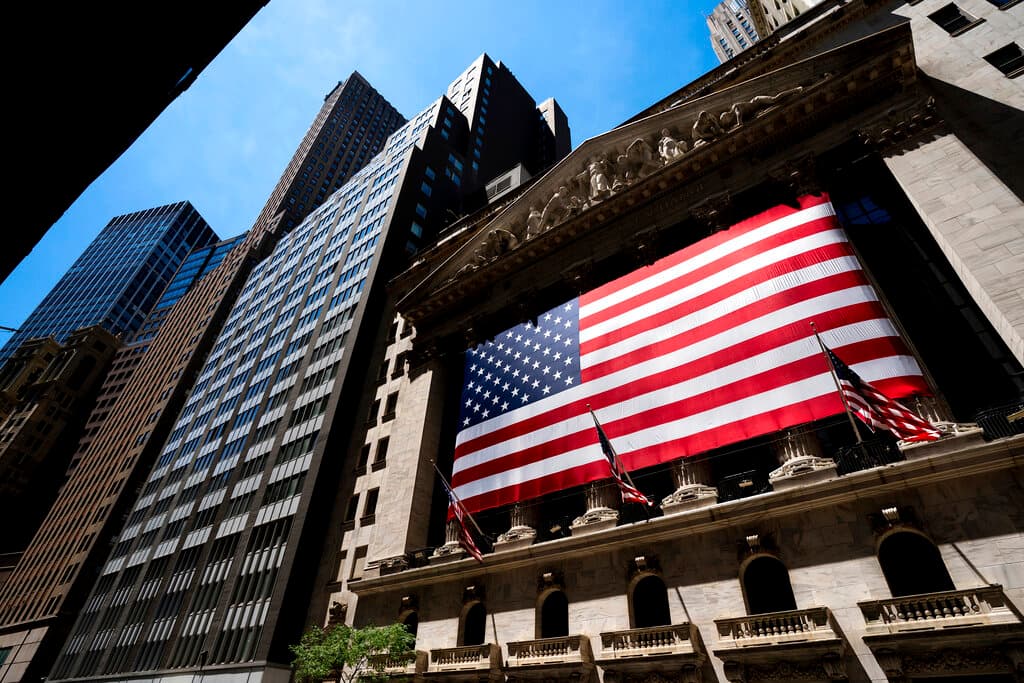Office Real Estate ‘Apocalypse’ Could Cause Fiscal ‘Doom Loop’ for NYC
A revised estimate of the declining value of commercial office space in New York suggests that the city could see $50 billion in ‘value destruction’ because of the post pandemic work-from-home trend, and as much as $453 billion in such losses nationally.

Researchers are forecasting an even steeper decline in the value of commercial real estate in New York City than previously thought, citing working from home as the main cause of a drop in value that could radically reshape the city.
In a working paper from the National Bureau of Economic Research titled “Work From Home and the Office Real Estate Apocalypse,” researchers predict that over the next 10 years office buildings in the city will see a 39.18 percent drop in value compared to where they were in 2019 before the pandemic.
The projected decline is even steeper than the 28 percent drop in value researchers had predicted when they first posted their paper on the Social Science Research Network at the end of May.
Such a decline would amount to a nearly $50 billion decrease in the value of New York’s commercial office space, estimated before the pandemic to be worth $110 billion. New York is the most expensive commercial real estate market in the world.
The 40 percent drop is actually a middle-of-the-road estimate, assuming some bounce back from the “near-permanent shock” of the remote work trend reshaping white collar America.
Estimates range from an optimistic recovery to 2019 values by 2029 to a more dramatic drop of nearly 60 percent in the value of office buildings during the same period, assuming work from home remains the new normal.
The researchers say that the consequences for New York and other large cities could be dire.
“These dynamics risk activating a fiscal doom loop,” they write. “With more people being able to separate the location of work and home, the migration elasticity to local tax rates and amenities may be larger than in the past.”
One of the first major effects of such a devaluation would be a massive hole in New York’s budget, nearly a third of which comes from property taxes.
A 40 percent decline in the value of office buildings in the city would cause a corresponding decline in the city’s tax revenue. Because New York City is required to balance its budget, the city would need to either reduce spending or raise taxes to make up the differerence.
An associate professor at New York University’s Stern School of Business and one of the authors of the report, Arpit Gupta, tells the Sun that the knock on effects of these valuations could spur sweeping changes to the city.
“I think in that scenario you would see drops in house prices and rents, and issues with repaying mortgages,” Mr. Gupta said. “I think we have seen these pressures in New York City in the 1970s and 1980s; as well as in Detroit.”
He added a caveat — that the researchers are “not necessarily predicting this outcome,” but instead presenting a range of outcomes. He did however stress that it is a “risk that cities affected by remote work need to consider.”
Mayor Adams has been historically vocal on the topic, last speaking to the issue in June, telling reporters that “I’m trying to fill up office buildings” and to get “people back in the office so we can build the ecosystem.”
He has since backed off the issue and conceded “that post-Covid is a different environment,” and that offices may only be filled a few days a week for the foreseeable future.
One contributing factor is a change in which offices are being used. Researchers identified a “flight to quality” by commercial tenants, meaning companies are more likely to lease top-tier office space than older or less prestigious addresses.
Even an office space rated as A+, however, could see an average decline in value of about 20 percent by 2029. As the Sun reported in February, this is because companies are now renting office space for different reasons, and the overall utilization of the space is down.
“We would not think that average utilization will ever be back to the same levels — this is gone,” an analyst relations manager at Locatee, Raphaël Morgulis, told the Sun. “You need to really look at what your people are actually doing with your office.”
According to Mr. Morgulis, offices are now more frequently used for events than as a primary location for focused work, meaning that businesses are prioritizing quality over square-footage.
This trend has created a debate on the merits of converting lower-rated office space to either higher-quality space, or to convert it for use as apartments.
The authors of the paper identified both of these as potential uses for the buildings, but noted that conversion to apartments could be challenging due to the structure of the buildings and the financial realities of renovation.
“Older buildings tend to be more amenable to apartment conversion,” they write. “Given the negative externalities associated with office vacancy, there may be a role for local governments to subsidize the conversion.”

